Observations on London Fashions June 1885
In no previous season do we remember to have been so much variety in fashion, not only in shape and color but materials and trimmings of all kinds.
First as regards materials, among the more luxurious fabrics are seen the most lovely designs in broché, satin, velvet, velours frisé, and other varieties of this class of goods far too numerous to mention in detail, but all alike gorgeous in design and coloring, stiff with raised embroideries of silk, chenille, gold and silver threads, or beads.
These luxurious designs are, of course, only suited for rich dresses; they should be used sparingly and with significant effect: that is, they must not be pleated and gathered, but laid in long deep folds, or used in a plain expanse, the beauty of the fabric rendering much drapery undesirable.
We have given on our plates for this month two or three instances of the judicious use of large-patterned materials, viz.: — 498 on Plate 1, where a rich mauve broché with velvet flowers is arranged with a striking rich plainness of effect with velvet of a darker shade, a graceful lightening of the purple shadows being affected by the gold buckles and gold lining of sash.
501 on Plate 2 shows another instance of this kind, a brocaded surah of delicate brown being made up in plain but harmonious lines, with white silk and gauze ribbon.
499 on the same Plate carries out this idea also but in a purer form.
Leaving these gorgeous materials, we turn for a moment to the numberless textures which claim attention for summer wear.
Among fashionable silken fabrics we may name faille française, a beautifully soft corded silk, suited either for dresses or mantles; Veloutine; surah; poplin, both plain and broché; watered silk and moiré, both of which will be fashionably worn for some time, the most favored patterns being those which are striped with satin, plain silk or velvet; and washing silks of all kinds for summer wear.
Of fancy woolens this season it may be indeed said their name is legion, and very charming most of them are.
Foremost we must name the fashionable canvas, which is sold in almost all colors, sometimes quite plain, sometimes striped with velvet or plush. This is usually trimmed with woolen lace. It can also be had in other pretty patterns, with appliqué flowers or geometric patterns in silk, gold or silver threads, or beads.
Next to this comes to beautiful dentelle da laine, or lace cloth; this is also to be obtained in most of the leading colors and is often made up over colored silk or satin.
Merino canvas, canevas de lalne, tennis crash, spotted and figured de laines, veiling of all qualities, thin cheviots, etamine, beige, sanglier cloth (this being often seen striped with bands of guipure); Panama and zephyr fabrics of all qualities, are among the fashionable fabrics for generally-useful wear, and afford an immense variety in the choice of costumes.
They are usually trimmed with woolen lace and are often made up of bands, panels, etc., of plush, satin, broché, or velvet.
In washing materials, we have zephyrs, sateens, percales, plain and broché, Arabian crapes, Alsatian lawns, embroidered lawns, spider cloth, crépe de coton, feathered stripe, pois de printemps, zephyr d'été, and so ad infinitum.
Of non-washing materials for summer wear, lace is the favorite, and never was there such choice of lace patterns as at present.
Besides the expensive laces, such as Brussels, Honiton, Mechlin, Buckingham, real Spanish, etc., there is an endless host of more reasonable fabrics.
Among the newest is the piece woolen or yak lace, which is sold of sufficient width to cover the front of a dress. It is black and often beaded either with jet or lead beads, the latter being the more fashionable at present.
Entire dresses of black lace, arranged in flounces, are often worn with a jersey bodice, beaded with jet, lead, bronze, steel or gold. This with a beautiful moiré sash makes a very recherche costume, suited to almost any occasion.
Jersey bodices, beaded or braided, are much worn at present, their thin texture and ready adaptability to every movement of the figure rendering them very pleasant for summer use.
For all new ideas in the making of dresses, we beg to refer our kind readers to the plates of fashion, which will be found replete with many novelties and show the prevailing styles in much more definite form than our pen could describe them.
The newest mantles are very short at back; some have long ends in front, others are short there also.
They are composed of harmonious mixtures of lace and silk, lace and broché, lace and plush, and are smothered in jet embroideries in a manner which certainly defies description, though most charming to behold.
Some mantles are made entirely of lace, for which yak and other woolen laces are used often, these are also lavishly trimmed with embroideries in jet black, lead, or bronze beads.
Other mantles again are cut from a net material, having a beautiful pattern in beads worked upon it, the edges being finished with beaded fringe to match. This beaded net is also much used for fronts of dresses.
For dust cloaks there are many varieties of woolen, the latest is being made of thin homespun in small checks, with rûchings of the same.
The trimmings for the season are principally beaded embroideries; for this purpose, all kinds of beads are used; jet, pearl, crystal, bronze and clair de lune. Chenille fringes are used intermixed with jet, and lace of all kinds, all qualities, all widths, is lavishly employed.
The newest ribbons for trimming are gauze, watered, reversible satin and ottoman, and terry.
Description of the Plates of Costumes
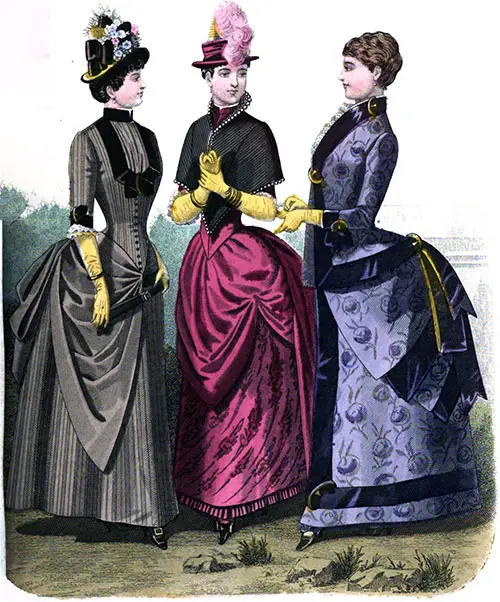
Plate 1: Walking, Carriage, and Reception Dresses
Fig. 1. — (496). — Walking Dress of dove-colored plain and striped woolen. The hairlines of the striped fabric may be colored if preferred.
The bodice, of the stripe, is pointed in front and trimmed at the top with a square vest of the plain material, enclosed by a band of brown velvet with pointed ends prettily drawn through a buckle.
An upright collar of velvet finishes the neck. The sleeves, of elbow length, have pointed bands of velvet ornamented by a buckle.
The overskirt of the plain woolen is prettily draped to fall in a point on the right side, where it is drawn up high; the loft side falls in a straight panel-shaped piece crossed near the waist by a band of velvet, and the back is arranged in very elegant folds. The underskirt is quite plain and is of the stripe.
Quantities: — 8 yards of striped woolen; 6 yards of plain material; 3/4 yard of velvet; 12 buttons; 1 large buckle; 2 smaller ones.
Fig. 2. — (497). — Carriage Dress of ruby sicilienne and broché velvet, and elegant cape of a black ottoman. The bodice of the dress is pointed in front and is quite plain. The straight drapery of skirt conceals the small point at back.
The sleeves are quite plain, of elbow length, and are finished by lace ruffles. The overskirt of Sicilienne is arranged to form a point precisely in front; a little to each side it is festooned, and the back falls to the edge of the skirt in straight and ample folds.
The front of the underskirt, which is quite plain, is of the velvet broché and is edged at the bottom by a plissé of Sicilienne. The capo is of the new cut, being pointed in front, and shaped to fit the figure.
A fringe of large jet beads finishes small Medici collar ornaments the neck, and all the edges set close together.
Quantities: — 9 yards of Sicilienne; 2 1/2 yards of Broché velvet for dress; and for cape 1 1/2 yards of ottoman; 2 1/2 yards of bead fringe.
We give the pattern of Cape (C497) full-sized.
The Coquette Cape (C 497).
The pattern given this month is that of the lovely and fashionable shoulder cape shown on the second figure of our first plate. It is given full-sized, and consists of four pieces, viz.: — front, back, side-piece of the back, and collar.
The front is pointed; one cut on the shoulder-seam shows where it is joined to a similar cut on the back-shoulder seam. Two cuts on the front indicate where two other cuts join it to the rounded side-piece, and three cuts in the back and side piece also show how they are put together.
The notch at the top of the side-piece must be placed at the shoulder seam when back and front pieces are joined together. The back may be cut with a point if desired like the front. This pretty pattern made be made up of any material.
Fig. 3. — (498). — Reception Dress of mauve velours frisé of a beautiful raised pattern, trimmed with purple velvet. The jacket is closed only on the breast, where it fastens by a buckle, being open below to show a pointed gilet of velours frisé, the portion above the buckle being finished by a frill of white lace.
The jacket is bordered all around by a band of velvet, ornamented at the side of the neck and middle of the back by buckles. The buckle at back serves to support a handsome sash of reversible ribbon, of purple velvet and gold-colored satin. The jacket should be lined with silk to match.
The skirt is cut plain and round and has a wide band of velvet around it, which also passes up the front of the skirt; a buckle ornaments the extreme front.
The draperies of skirt consist of four pointed pieces, two of velvet and two of velours frisé, which start from the sides and disappear under the sash at back. This elegant toilette could also be made up in black for mourning with excellent effect.
Quantities: — 9 yards of velours frisé; 5 yards of velvet; 4 yards of plain silk to lino jacket; 3 1/2 yards of ribbon; 6 buckles.
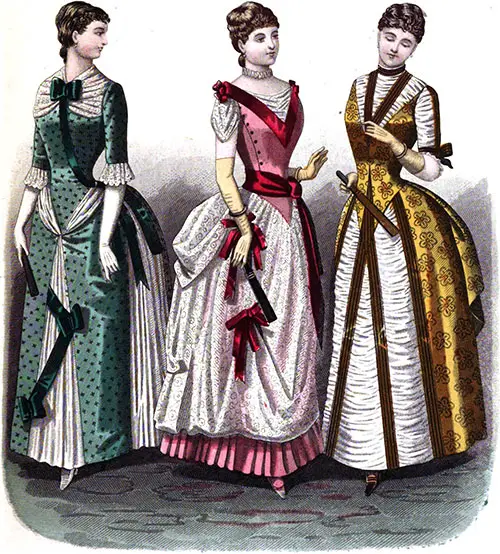
Plate 2: Dinner Dress, Evening Dress, and Dinner or Theater Costume
Fig. 1. — (499). — Dinner Dress of white surah and green satin starred with chenille. The front of the dress is arranged en Polonaise, the side panels extending the entire length of the skirt. These are cut open in front to show the fulled underskirt of surah and are ornamented by pleasingly arranged bows of green satin ribbon.
The bodice, both back, and the front are cut off below the shoulder, the space to the neck being filled in by a drapery of lace. This drapery is secured at the front of the neck by a bow of satin ribbon, from which starts a loose loop, which, crossing the bodice, finishes on left hip by loops and ends falling on the skirt.
The sleeves of the satin are of elbow length, quite plain, and finished by lace ruffles. The back has panels of the satin, which fall quite straight on the underskirt. A drapery of the surah is arranged on the hips, starting from a point in front where the panels open on the underskirt and meeting at the back of waist.
This dress may be fastened at back by invisible hooks and eyes if preferred. The underskirt is of white surah, fulled into the waist in "housemaid" style and falling loosely under the satin panels of the overskirt.
Quantities: — 5 yards of surah; 8 yards of satin; 1yard of piece lace; 1 1/2 yards of satin ribbon medium width; 4 yards of narrower.
Fig. 2. — (500). — Evening Dress of salmon pink poult de soie and white piece lace. The low bodice of silk is pointed both back and front and closes at the right side by cherry-colored satin buttons.
The neck is trimmed in V shape, with a band of cherry satin, having satin rosettes on the shoulders. The V-shaped openings at front and back are draped with lace to the level of shoulders, and the epaulet shaped sleeves are of lace.
A drapery of satin loosely encircles the waist and is knotted at the left side, where it falls with pointed ends on the skirt. The overskirt is of lace. It is cut around and full and is arranged en bouffant on the underskirt, the drawings of the front being kept in place by careless groups of cherry satin ribbon.
The back, which is very much full, is loosely draped and falls very gracefully. The underskirt is of salmon-pink poult de soie, pleated from the waist.
Quantities: — 10 yards of poult de soie; 6 yards of piece lace; 2 yards of satin; 4 yards of satin ribbon; 12 buttons.
Fig. 3. — (501). — Dinner or Theatre Costume of chestnut brocaded surah, and white Liberty silk. The bodice is cut with a V-shaped opening back, and front; the brocade ceases at the shoulder, and the openings of back and front are filled in with bouillonné of the white silk, crossed by V-shaped bands of gauze ribbon of a somewhat darker shade than the brocaded surah.
Below the waist the body is cut in two points, the opening thus made being filled in by a pointed piece of gauze ribbon. The draperies of the skirt cover the back at the waist.
The sleeves are of silk bouillonné and trimmed by bands and bows of gauze ribbon; a narrow band of which serves as an upright collar. The front of the skirt is of silk, bouillonné, and trimmed with bands of the gauze ribbon, two of which, starting from the point of the bodice, form an inverted V, and two others, which are placed at sides at the joining of the front and back skirt.
The back is of the brocaded surah, arranged in a plain skirt, upon which are placed several gracefully-draped folds, giving a very stylish appearance.
Quantities: — 10 yards of brocaded surah; 4 yards of Liberty silk; 10 yards of gauze ribbon.
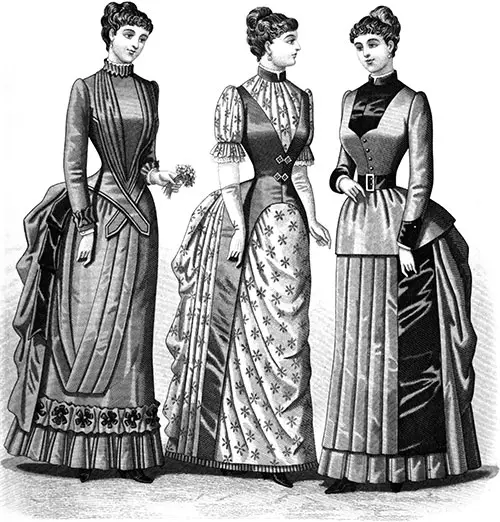
Plate 3: Home Costume, Dinner and Morning Dresses
Fig. 1. — (508). — Home Costume of grey cashmere suited for half mourning. The bodice is of an elegant cut, having a drapery on each side starting from the neck and coming in a point to the waist, below which are crossed the pointed ends of front side-pieces.
The draperies of the skirt are arranged to be very much full, and close to the waist at back. The sleeves are quite plain, finished at the wrists by a niche of cashmere, the neck being similarly trimmed.
The underskirt is plain and round, having at the edge a box-pleated flounce, headed by a ruché on which, at intervals, are placed rosettes of black ribbon velvet, each having a button in the center.
The front of skirt is also ornamented by a pretty folded drapery, which starts from under the crossed points in front before referred to and is carried in a slanting direction towards the right side nearly to the ruché of cashmere heading the flounce; it is then turned under, and carried up to the back of waist, disappearing under the drapery.
The back drapery is very much full and arranged en bouffant about two-thirds of the skirt, from thence it falls in deep pleats. A long velvet ribbon bow end trims the right side.
Quantities: — 14 yards of cashmere; 2 yds ribbon velvet; 8 yards of narrower for rosettes; 8 buttons.
Fig. 2. — (503). — Reception or Dinner Dress of mauve brocaded surah and satin merveilleux. The dress itself is composed entirely of the surah, the corselet corsage with extended side panels being of the satin.
The surah bodice is gathered to the throat back and front and finished by a narrow upright collar of satin. The sleeves, which scarcely reach to the elbow, are made of a deep bouillonné and a frill and are edged by lace ruffles.
The corselet corsage is cut in V shape both back and front and is ornamented in front with two pairs of diamond-shaped buttons. The side panels which are cut in one with the corselet, fall to the bottom of the skirt, gradually narrowing as they reach the edge.
The front of the skirt is slightly draped under the side panels, the side is laid in three vertical pleats, and the back is bouffant. A plissé satin edges the skirt all around. A handsome sash of mauve moiré ribbon ornaments the back below the waist.
Quantities: — 10 yards of brocaded surah; 5 yards of satin merveilleux; 4 buttons; 4 1/2 yards of Ribbon for a sash.
Fig. 3. — (501). — Morning Dress of summer serge trimmed with velvet. The front of the bodice is trimmed with a pointed bib-piece of velvet, which, at back, describes a sailor's collar.
The bodice fastens to the waist by buttons with cuffs and a buckled waist belt of velvet. There is a short, slightly-fulled drapery below the waist at front and sides, which disappears under the back bouffant.
The front of the skirt below this drapery is laid in deep pleats and has at the side a vertical panel of velvet. The back is bouffant from the waist. The underskirt is arranged in hollow pleats.
Quantities: — 14yards of summer serge; 2 yards of velvet; 8 buttons; 1 buckle.
Plate 4: Walking Dresses and Summer Dust Coat
Fig. 1. — (505). — Walking Dress, made of brown nun's veiling with satin of a darker shade. The bodice is cut with a slight point back and front and fastens in a curve from the neck to the lower edge.
The button-holes are made some distance from the front edge, which is trimmed by three rows of brown ribbon velvet of the darker shade. The upright collar is finished with two rows of the same, and a group of velvet bows is placed at the front of the neck. There is a similar one ornamenting the point of the bodice.
The sleeve is of novel cut, the back part being made plain of the veiling, and the front of the satin bouillonné crossed half-way down by a band of veiling. It is of elbow length. A quite plain sleeve would go equally well with this costume if preferred.
The front of the skirt is of satin and is laid in deep pleats its whole length. The overskirt is of redingote style and is fastened to the bodice all around by a ruché of the satin.
At the sides, it is laid in five narrow pleats its whole length, the back portion being gathered and falling loose in housemaid style. A beautiful sash of satin or moiré decorates the back.
Quantities: — 10 yards of veiling; 4 yards of Satin; 3 1/2 yards of narrow black velvet; 2 1/2 for bows; 12 buttons; 4 1/2 yards of wide ribbon for a sash.
Fig. 2. — (506). — Stylish Walking or Garden Party Dress of apricot-colored Liberty silk and brown dentelle de laine. The basque bodice closes at the left side of the neck, the front edge being cut in three Vandykes, each finished by a button.
Brown velvet leaves applique trims the extreme front of bodice; a row of similar leaves going in a band around the edge, and also trimming cuffs; a group of ribbons and bows ornaments the front of basque.
The overskirt is of dentelle de laine, draped as a tablier in front, drawn up high on the left side and very bouffant at back. The left side is trimmed by a piece of silk forming spiral folds and edged by the velvet leaves.
The underskirt is of the silk, plain in front and pleated at sides and back, and trimmed all around by a row of velvet leaves.
Quantities: — 10 yards of silk; 5 yards of dentelle de laine; 1 1/2 yard of ribbon. The velvet leaves may be purchased singly or by the dozen.
Fig. 3. — (507). — Summer Dust Coat of buff, grey, or brown alpaca or silk, with a broad satin sash to correspond. This elegant garment defines the figure fully; the fronts are laid in two pleats on each side the whole length and fasten to about halfway down the skirt by two pairs of silver clasps.
The back forms deep pleats below the waist. The handsome sash has fringed ends, and passing loosely around the waist, is tied in a careless bow on the left side.
Quantities: — 10 yards of silk; 3 1/2 yards of satin ribbon for a sash.
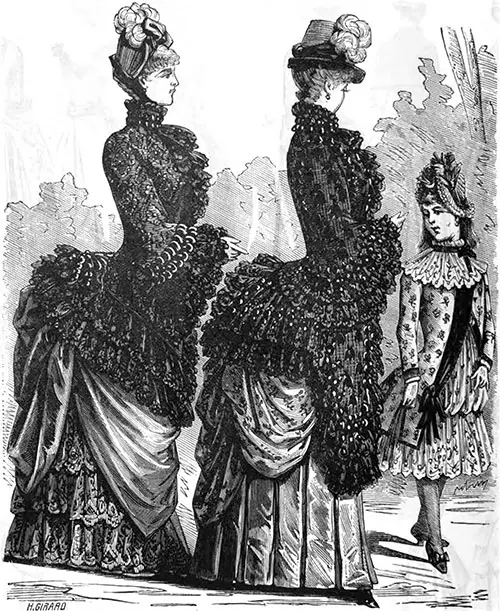
Plate 6: Stylish Visiting and Afternoon Costumes
Fig. 1. — (C 165). — Visiting Costume for Carriage wear of velours frisé, handsomely trimmed with Spanish lace and jet passementerie of a large and handsome design.
The Visiting Costume is cut to define the waist at back and is considerably shorter at that part than at the front. All the edges are finished by two flounces of the lace, the neck and sleeve portions being trimmed with the passementerie, a handsome ornament of which also completes the back below the waist.
The front is trimmed with a handsome jabot of lace, and the neck, which is finished by a very deep upright collar, has a frill also of Spanish lace.
Quantities: — 5 yards of velours frisé; 18 yards of lace; 3 yards of passementerie.
Fig. 2. — (C 166). — Stylish Visiting Costume, with long ends in front. It is made of velvet gauze of a beautiful raised pattern and trimmed around all the edges with two flounces of Spanish lace, and handsome jet passementerie.
The back is cut to set firmly to the figure and is cut up from the lower edge to a short distance below the waist, the edges being finished with the lace flouncing.
The passementerie is carried over the shoulder and trims the scams at back to the waist. The neck is finished by an upright collar trimmed with passementerie and edged with a lace frill.
Quantities: — 7 yards of velvet gauze; 18 yards of Lace; 7 yards of passementerie.
Fig. 3. — (J 156). — Afternoon Costume for a young lady of 10. It is composed of blue-flowered foulard and trimmed with blue satin and cream lace.
The upper part of the dress is a princess coat, which opens in the front, and is trimmed on the right side with a folded drapery of satin, finished by a group of ribbon loops. A plain band of the satin finishes the left side of the front opening.
The edge is cut in deep tabs, bound with satin. A handsome collar of cream lace finishes the neck. The underskirt consists of a bouffant of the foulard, completed by a deep flounce of the cream lace. The sleeves of coat shape have plain satin cuffs.
Quantities: — 6 yards of foulard; 3 yards of lace; 1 yard of satin; 2 yards of ribbon.
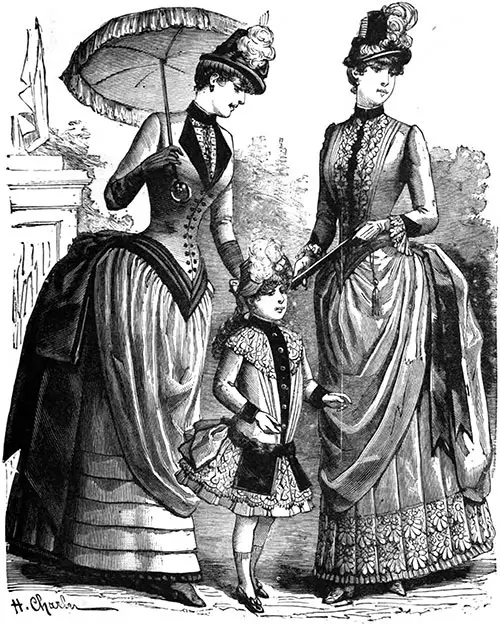
Plate 7: Morning Promenade Costumes and Child’s Dress
Fig. 1. — (503). — Morning Promenade Costume of fawn-colored Soudanese crape trimmed with brown satin. The bodice is pointed, the front opening at neck over a gilet of tulle, embroidered with brown silk flowers.
The collar and revers are of satin, and the front closes by buttons, having a second row sewn on an ornament. A folded drapery of satin is placed all around the edge of bodice, disappearing at the back under the handsome sash of brown satin ribbon.
The overskirt is full in front and is draped high up to the waist under the sash, falling around in front, over an underskirt trimmed with five crossway tucks and a pleated back drapery. A narrow plissé finishes the edge of the skirt.
Quantities: — 8 yards of Soudanese crape (46 inches wide); 1 1/2 yards of satin; 3 1/2 yards of ribbon for sash; 20 buttons.
Fig. 2. — (J 157). — Dress for a child of 5 or 6 of pink cashmere, trimmed with black velvet and cream woolen lace. It is of princess cut, the fronts being fulled in below the waist under a band of velvet, having below it handsome velvet tabs.
The front is trimmed with a narrow plastron of velvet, fastened by large pearl buttons. The neck has an upright band of velvet and a deep falling collar of woolen lace.
The skirt is composed of a deeply pleated flounce of cashmere, almost covered by a frill of lace, and a sash drapery of the cashmere at back. Coat sleeves with velvet cuffs.
Quantities: — 3 yards of cashmere; 1 yard of velvet; 2 yards of woolen lace.
Fig. 3. — (509). — Morning Promenade Costume of navy-blue spider cloth (a washing material) trimmed with washing lace of mixed navy-blue and red. The bodice is pointed and has a collar and thin gilet of navy-blue velvet, enclosed by rows of lace and drapery of the material.
There is also a drapery which defines the point in front and is carried to the back. The sleeves have pointed cuffs of velvet and lace ruffles. The overskirt is prettily draped back and front and is drawn up high on the left side under a bow and long ends of reversible red and blue ribbon.
The underskirt is laid in deep pleats from the waist and trimmed near the bottom by two rows of lace placed close together and put on flat. A plissé finishes the extreme edge.
Quantities: — 14 yards of spider cloth (27 inches wide); 10 yards of lace; 1 yard of velvet; 3 yards of ribbon.
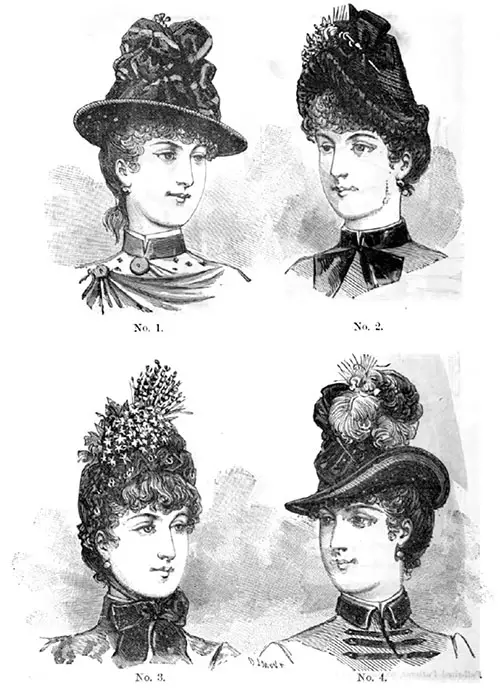
Plate 8: Parisian Hats and Bonnets
No. 1. — Hat of brown straw, the brim lined with brown velvet, and having beading at the edge. The crown is high and is trimmed with a striped brown, red, and yellow scarf of twilled silk, carelessly arranged and ornamented by a fancy pin.
No. 2. — Hat of fancy straw lined and edged with black velvet bouillonné. It is trimmed with a twist of velvet around the crown; a beautiful bow of ottoman ribbon with a decorative pin, and a large bunch of wildflowers.
No. 3. — Bonnet of black lace edged with a bouillonné of ottoman silk. It is trimmed with chartreuse ribbon, a beaded aigrette of the same color, and a bunch of pale yellow jasmine.
No. 4. — Hat of fancy straw, the brim turned up on one side. It is trimmed with black velvet and a cluster of yellow and brown feathers.
"Observations on London Fashions," and "Description of the Plates of Costumes," in London and Paris Ladies Magazine of Fashion, Literature and Fine Arts, London: Kent & Co. Vol. 58, No 654, June 1885, p. 1-5.
Editor's Note: Some terminology used in the description of women's clothing during the 1800s and early 1900s has been changed to reflect more modern terms. For example, a women's "Toilette" -- a form of costume or outfit has an entirely different common meaning in the 21st century. Typical terms applied to "toilette" include outfit, ensemble, or costume, depending on context.
Note: We have edited this text to correct grammatical errors and improve word choice to clarify the article for today’s readers. Changes made are typically minor, and we often left passive text “as is.” Those who need to quote the article directly should verify any changes by reviewing the original material.
